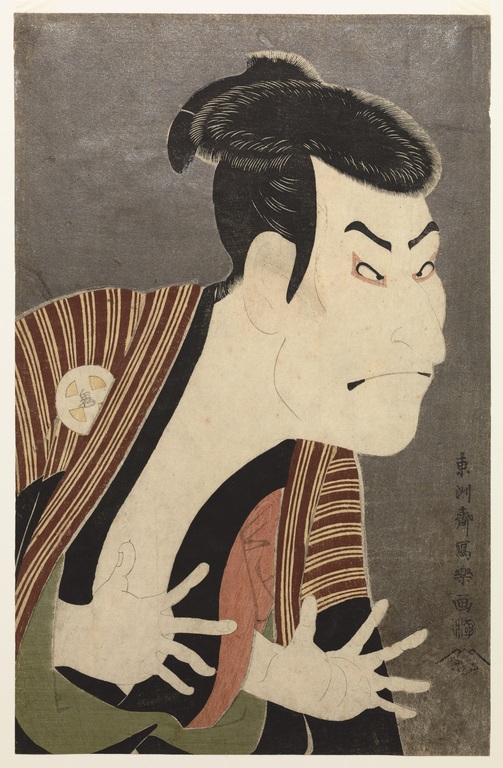Bushido
The unwritten Samurai code of conduct, known as Bushido, states that the true warrior must hold that loyalty, courage, veracity, compassion, and honor as important, above all else. An appreciation and respect of life was also imperative, as it added balance to the warrior character of the Samurai. He was often very stoic with a deep and strong philosophical passion. He could be deadly in combat and yet so gentle and compassionate with children and the weak.
So what’s this got to do with selling on Google?
Over the last 10 years I’ve seen who has what interest when it comes to attracting advertiser dollars. One big negative element on the search marketing side is taking advantage of a knowledge gap between the marketer and the advertiser to extract unearned gains from the advertiser. In the mid/late 2000s and earlier this decade particularly, people built multi million dollar businesses around buying Google ads, marking them up 2x, 3x, 5x, or more and reselling them with no value added to unsophisticated business owners. Today this model has mostly shifted to Facebook ads and other social platforms, but exploiting the knowledge gap, rather than putting your expertise to work for a client by educating your advertisers or attracting ones already in the know, has always disgusted me.
How does this play out with old media actors like ad agencies and local media reps? Their message is always pretty much the same. The narrative from the old guard revolves around difficult to measure metrics like gross impressions and brand awareness. The idea that an ad could be directly tracked to revenue has never been very popular with this crowd. Appealing to “brand awareness” or “product positioning” makes sense for those who practiced marketing in a pre Google world. When they aren’t feeling frightened of direct measurement of ad performance the old guard views digital advertising as the realm of interns. Just hire some kid who knows how to work a Facebook profile and that whole digital ad thing will do itself. This will make the client feel like he’s “doing the Google thing” without taking too much budget away from your existing, and wildly profitable for the agency, ad production or TV/radio campaign.


Another important participant on this battlefield is Google itself. Over the last decade Google’s relationship with digital agencies and direct advertisers has changed. When I first started, it was very difficult to contact an actual Google representative. If you could, they were really only able to work with billing issues. More recently Google has become eager to “help”. This “help” pretty much always has to do with the advertiser increasing their budget and never has to do with measuring that increased cost against a reliable measurement of the benefit.
This is why you need a samurai
In feudal Japan, the Samurai was something of a mercenary. More than a mercenary, the samurai obeyed a strict, self imposed code of ethics. In 13th century Japan the war was quite literal. Samurais constantly trained in hand to hand, weapon, and archery combat so they could best serve their lord in battle. In war the goal is obvious, kill the enemy. In digital advertising, today’s feudal lord is faced with a court of advisers advocating for many different goals. The social media agency claims engagement is the best goal, the radio rep advocates for reach and frequency, Google probably thinks you need to buy more traffic.
Why are they all wrong?
They’re all wrong because none of them are focused on the one metric that is indisputable. From my first, doe eyed, day in the advertising business, it seemed completely obvious to me what the correct goal was. Time has disabused me of the notion that the goal is obvious, because so many intelligent people choose not to pursue it. This ad populum argument has not, however, not shaken my belief that I’ve identified the correct goal. What’s the one metric which can do nothing but help the business owner win in his marketplace?
Revenue
Is there a good reason to buy advertising other than to acquire customers who buy things from you at a price that allows you to earn a profit? Of course there are reasons other than this to purchase advertising, but I’d argue that there are not good reasons. Ego is one. “I like to see my name on a pretty billboard every morning on the way to work”. “It makes me happy that everyone in town knows my name because they hear it on the radio 15 times a day”. “My business is obviously the best in my industry because I have the most likes on Facebook”. If you agree with these ideas, and think they are worth pursing, there are literally thousands of businesses who would love to help you achieve your goals. Samurai Direct Response is not one of them.
Maximizing revenue through measuring customer lifetime value (CLV)
So, we’ve decided that the correct path to deciding which advertising to purchase and which to eschew is to measure that advertising’s impact on revenue. In 2018, it is possible (and if you hire yourself a direct response samurai, quite easy) to directly measure how each click you buy impacts that day’s sales results.
Can this notion be taken too far? Absolutely. If all you did was measure the direct sales results from each individual click, commonly known as last click attribution, you will miss the forest for the trees. The sophisticated measurement strategy takes into account additional factors and opportunities. By implementing emerging technologies like remarketing ads, lookalike audiences and marketing automation a simple 1 to 1 analysis fails to allow the advertiser to achieve maximum profitable reach. This in mind, implementing a wholistic measurement strategy, which takes account of the value of follow on visits, customer advocacy, remarketing through email/social/display, and upsell/cross-sell/loyalty revenue makes the most sense.

Sound Good?
Outstanding, let’s do it.
I hope that we now both see the path truely by seeing it broadly. Considering the success of companies like Google and Amazon who have implemented a stringent testing protocol based on optimizing customer lifetime value and executed against that plan, we know it’s possible. If it was easy, everyone would already being doing it. If we want to move in this direction, we need to value a few things other than money first. Veracity, telling the truth, even if it might not be in my monetary or ego interest at the moment. Uncovering the facts of what works and what doesn’t. Having the courage to recognize, and be compassionate to ourselves, regarding failure. Readily as honoring success is also required. In these ways, and others, it is obvious how reflecting upon and how imposing upon ourselves the ancient warrior code of bushido will be useful in pursuing excellence in digital marketing.
There are a few steps in this process. First, you have to set an aggressive, but realistic, goal. Second, you need to execute an advertising campaign which intends to achieve that customer lifetime value goal. Third, you need to carefully measure and reflect on the results of that campaign. The final step is simply to repeat the process either endlessly, or until you’ve achieved the real goal that was standing in the shadow behind the initial goal. My first goal is to find one client who sees enough value in my assistance that they are willing to sign a contract engaging my services. My real goal is to own a house in Hanalei Bay, Kauai, work 20 or 30 hours a week, and spend the rest of my time drinking green juice, training jiu jitsu, surfing and eating poke. Schedule a call with me so we can work to identify your first goal, put a plan in place to achieve it, and set both of us on the path to achieving our real goal.

